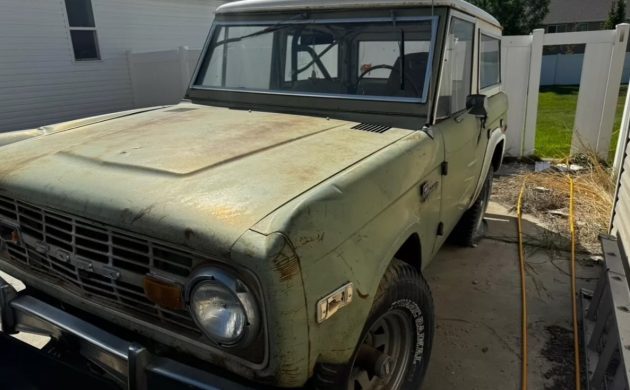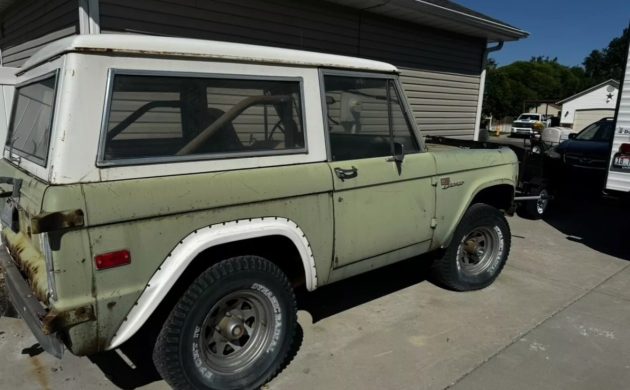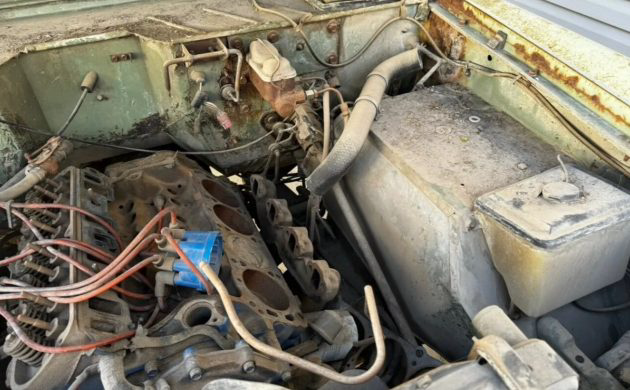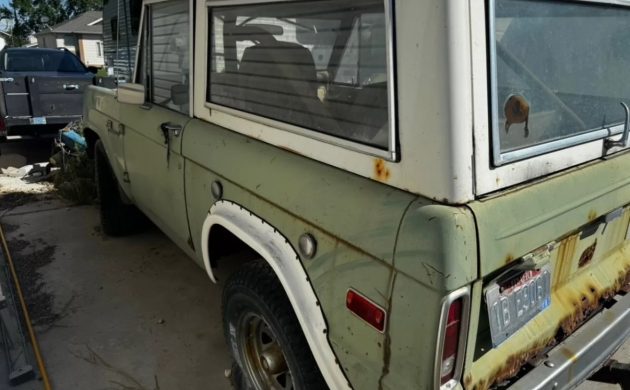Most modern vehicle manufacturers have a fixed color palette for particular models in their range. However, there was once a time when buyers could select a Special Order shade, and companies were willing to accommodate such requests. This 1972 Ford Sport Bronco is a perfect example of that approach because Ford ceased offering the shade of paint gracing its panels when 1971 Bronco production ended. This classic requires plenty of TLC, but most of the items required for a faithful restoration are present. It has followed the typical First Generation Bronco trend of generating plenty of interest since hitting the market, so why not take a closer look to see if it is a project that you would willingly tackle?
Bronco buyers in 1972 weren’t short of color choices when ordering their new toy. The palette included an impressive seventeen shades, but they obviously weren’t to the first owner’s taste in this case. They placed a Special Order to have the vehicle finished in Boxwood Green. That color was available across several models in Ford’s 1972 range but was removed from the Bronco options list at the end of 1971. The seller states that this classic wears its original paint, although it shows plenty of signs of age. The rear wheel arches have been cut to accommodate larger wheels and tires, and there is rust in the tailgate and on a couple of other exterior surfaces. However, that and the typical front inner fender rot appear to be the worst of its problems. The pillars are solid, while the frame and floors appear to sport nothing beyond dry surface corrosion. The buyer faces cutting and welding, but it isn’t as extensive as we often see in First Generation Broncos that cross our desks. Purists won’t approve of the larger wheels, but the seller includes a freshly powdercoated set of original steelies and hubcaps for those aiming for a faithful restoration.
The seller includes a Marti Report in the sale which confirms that the first owner ordered this Bronco with a 302ci V8, a three-speed manual transmission, a 3.50 limited-slip rear end, a heavy-duty radiator, and an auxiliary fuel tank with a skid plate. The V8 produced 140hp and 230 ft/lbs of torque, which owners found adequate in most circumstances. It goes without saying that this classic doesn’t run or drive. The engine was partially dismantled for a rebuild years ago, and that process didn’t get too far before stalling. It looks like many of the removed parts are inside this classic, meaning it may be possible to complete what someone else started. However, the seller includes an additional 302 of 1973 vintage if the numbers-matching powerplant is beyond salvation.
Parchment vinyl was a popular interior trim choice in 1972, which was what this Bronco featured when it rolled off the line. The driver’s seat is from another vehicle, but the listing suggests the original bucket is included. The back seat is intact, although this Bronco requires nothing less than a complete retrim. High-quality kits are readily available, and when you consider the potential value of this classic once fully restored, that expense is justified.
The auction action on this 1972 Ford Sport Bronco demonstrates that these classics remain desirable. It has received twenty-two bids since the seller listed it here on eBay in Pocatello, Idaho. It remains at a relatively modest $7,100, which is below the reserve. There is plenty of time remaining on the listing, and with sixty-eight people placing it on their Watch List and a strong three-figure viewing history, the price will undoubtedly climb. Returning it to its former glory will require deep commitment, but is that a challenge you are tempted to accept?






now I know where the “Roached” saying comes from.
Wouldnt have to be from this specific model but that’s
what came to mind. I think I brought one back from
only slightly better than this (arches werent cut,
mechanically better~
Market is softening on these, probably take off again if the economy takes off again. Now is the time to buy, maybe. 🤔